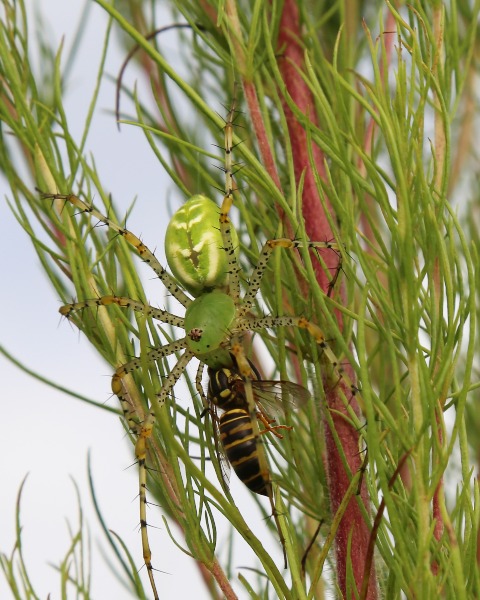Member Symposium
Plant-Insect Ecosystems
Selective toxicity of insecticides on two generalist predators of Bemisia tabaci
- AP
Albertha J. Parkins
Graduate Research Assistant
University of Georgia
Tifton, Georgia - AK
Arash Kheirodin
University of Georgia
Athens, Georgia - AF
Aspen Foster
University of Georgia
Athens, Georgia 
Jason M. Schmidt
Associate Professor
University of Georgia
Tifton, Georgia
Presenting Author(s)
Co-author(s)
The sweetpotato whitefly, Bemisia tabaci (Gennadius)(Hemiptera: Aleyrodidae), is a problematic pest in cotton and vegetable crops. Insecticides are the most common control strategy for B. tabaci, which has eroded past IPM programs and has led to insecticide resistance. A promising path is improving biological control by natural enemies and the timely use of selective insecticides. However, despite the potential benefits, critical knowledge gaps persist concerning their sublethal impacts on natural enemies. We exposed predators to commercially available insecticides (Cyantraniliprole and Pyriproxyfen) using a combined laboratory and field approach to assess the effects of insecticide exposure on survivorship and whitefly predation. In the laboratory, we isolated two predators, Hippodamia convergens Guérin-Méneville(Coleoptera: Coccinellidae) and Geocoris punctipes (Say)(Hemiptera: Geocoridae), to estimate survivorship and whitefly consumption. In the field, we deployed whitefly-infested potted cotton plants into replicated cotton plots under different insecticide treatments. We enumerated the resulting whitefly populations from enclosed (predator exclusion) or open (predator accessible) potted plants. Our results suggest that pyriproxyfen appeared to have no significant effect on predators, and cyantraniliprole exposure directly affected Hippodamia by reducing survivorship duration following exposure. In addition, cyantraniliprole exposure indirectly affected both predators by reducing prey consumption and altering prey preference. Under field conditions, fewer whiteflies remained on potted plants that were accessible to predators as compared to enclosed, regardless of pesticide exposure. Combined our results suggest that pyriproxyfen had negligible impacts on the predators tested. Within controlled laboratory conditions, cyantraniliprole demonstrated negative effects. Still, these effects appeared to be potentially mitigated in open-field environments.

.png)
